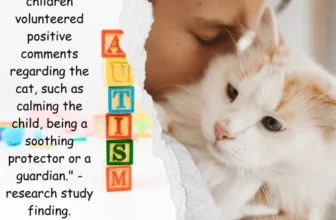The Allure of California Spangled Cats

California Spangled Cats have been around since the 1980s and are a relatively rare breed. Their striking resemblance to wild cats is what makes them stand out, with their coats boasting a variety of exotic patterns and colors, ranging from black and white to tabby and tortoiseshell. These cats are playful, energetic, and make great companions for those looking for a feline friend.
One thing that attracts many people to California Spangled Cats is their compatibility with other pets. These felines are known to be social and friendly with both cats and dogs, making them an excellent addition to any household with other furry friends. However, introducing a new pet to the home can be a daunting process, and it’s essential to go about it with care to ensure everyone’s safety and happiness.
Introducing a New Feline
Adding a new cat to the household can be challenging, and there are usually a few steps you need to take before it’s safe to leave your new furry friends alone without supervision. It’s important to give your California Spangled Cat time to adjust to their new environment before introducing them to another kitty. This process can take anywhere from a few days to a few weeks. Once your new cat has settled in, it’s time to begin the introduction process.
Things to Consider
It’s essential to take certain things into consideration before introducing a new cat into your home. These include the age and temperament of the cats, their health, and their gender (if they’re not spayed or neutered). Older cats may not appreciate the hyperactivity of a young kitten, and a shy cat may not take well to an assertive cat’s presence. It’s also crucial to make sure both cats are up to date on their vaccinations and that they’re both healthy.
Managing Conflicts
Even with the best of intentions, conflicts can arise between cats. Two cats may not get along due to personality clashes, and in some cases, the presence of a new cat can upset the natural pecking order in the household, making existing pets feel threatened. If you notice your cats starting to squabble, it’s essential to intervene and find ways to help them get along. This can include introducing new toys, providing separate feeding and litter areas, and gradually increasing the cats’ alone time together.
When All Else Fails
Sometimes, despite all your efforts, the cats simply cannot get along. It’s essential not to try to force a relationship that isn’t working. You can try separation techniques, such as keeping them in separate rooms or behind baby gates, and offering positive reinforcement when they display good behavior. If all else fails, it may be time to consider finding a new home for one of the cats.
California Spangled Cats are social creatures that thrive on human and animal interaction. With careful planning and supervision, they can coexist peacefully with other cats and even dogs. For more tips on introducing your California Spangled Cat to other pets in the household, check out this article.
Bringing Other Cats into the Home

Welcoming another cat into a household that already has a California Spangled Cat can be an exciting but daunting experience. It is important to consider factors such as the new cat’s personality, age, and breed before introducing them to your California Spangled Cat. Failure to do so can lead to aggression, territorial behavior, and injury. However, with proper introductions and management, cats can often learn to coexist and even form close bonds. Let’s explore some tips for introducing cats and common situations that may arise when bringing a new feline into a home with a California Spangled Cat.
Introducing a New Feline
When introducing a new feline to your California Spangled Cat, it’s crucial to take the appropriate steps. Below are some tips to help ensure a smooth introduction:
| Step 1: Isolate the new cat. | If possible, isolate the new feline in a separate room with their food, water, litter box, and toys. |
| Step 2: Exchange scents. | Introduce the cats to each other’s scent by swapping their bedding or rubbing a cloth on one cat and placing it near the other. |
| Step 3: Supervised visits. | Once the cats are comfortable with each other’s scent, introduce them through a cracked door or baby gate. Supervise their visits to ensure they don’t fight. |
| Step 4: Increase visit durations. | If the cats seem comfortable, increase the duration of their visits and eventually remove the barrier separating them. |
| Step 5: Provide separate resources. | Ensure each cat has their resources, including food, water, litter box, and sleeping areas. This can help reduce territorial aggression. |
It’s important to remember that each cat is unique and may require a different approach when introducing them to another feline. If you are unsure about how to go about introducing a new cat, consult with your veterinarian for additional guidance.
For more information on how California Spangled Cats interact with small animals, check out our article on California Spangled Cats and Small Animal Coexistence.
Things to Consider
When considering bringing another cat into your home where a California Spangled Cat already resides, there are a few things to keep in mind. To help you make an informed decision, we’ve compiled a list of important considerations in the table below:
| Consideration | Description |
|---|---|
| Personality | Consider the personality of both cats, are they both easy-going or do they tend to be dominant? |
| Age | Consider the age of both cats, as older cats may not have the patience or energy to tolerate a kitten or young cat. |
| Gender | Consider the gender of both cats, as two males may be more likely to fight than a male and female or two females. |
| Temperament | Consider each cat’s temperament. Are they easily stressed or anxious? If so, the introduction process may need to be slower and more controlled. |
| Introductions | Make sure to introduce the cats in a neutral space, like a room that neither cat frequents, to avoid territorial issues. |
| Prior Experiences | If either cat has had prior negative experiences with other cats, it may be more difficult to introduce them to one another. |
By keeping these things in mind, you can better assess the compatibility of a new cat with your California Spangled Cat and take appropriate steps to ensure a successful introduction. And remember, sometimes the process can take time and patience, but the end result can be worth it for a happy multi-cat household. If you’re considering bringing home a bird with your California Spangled Cat, be sure to check out our article on California Spangled Cats and bird compatibility tips.
Managing Conflicts
When bringing a new cat into a home that already has a California Spangled cat, conflicts may arise. It’s important to manage these conflicts to ensure the safety and happiness of all pets. Here are some tips for managing conflicts:
- Monitor the Interactions: Keep a close eye on the cats’ interactions and behavior towards each other. Look for signs of aggression, such as hissing, swatting, or growling.
- Separate When Necessary: If conflicts do arise, it’s important to separate the cats. This can be done by confining one cat to a separate room or using baby gates to separate them while still allowing them to see each other.
- Provide Separate Resources: Cats can become territorial over resources such as food, water, and litter boxes. It’s important to provide separate resources for each cat to avoid conflicts.
- Use Positive Reinforcement: Reward good behavior with treats and praise. This can help to reinforce positive interactions and reduce the likelihood of conflicts.
- Consider Consulting a Professional: If conflicts persist, it may be necessary to consult a professional animal behaviorist to address the issue.
Remember, conflicts can happen even with the best preparation and management. It’s important to stay patient and persistent in managing conflicts for the safety and happiness of all pets involved.
When All Else Fails
If you’ve tried all the tips mentioned above and your California Spangled cat is still struggling to get along with the other feline in the house, it may be time to take more drastic measures. Here are some options to try:
1. Separate living areas: If possible, give each cat their own living space so they don’t have to share. This could mean closing doors to certain rooms or creating separate sections within a larger communal area.
2. Consider a cat behaviorist: A professional cat behaviorist can help assess the situation and provide customized solutions. They can also help you establish a plan for gradual reintroduction.
3. Provide plenty of resources: Make sure each cat has their own food and water bowl, litter box, and toys. Additionally, provide multiple comfortable and safe spaces for each cat to retreat to if they need a break.
4. Consult with a veterinarian: Your veterinarian may be able to offer advice or medication to help ease tensions between cats. They can also check for any underlying health issues that could be contributing to the behavioral problems.
5. Consider rehoming: It’s not an ideal solution, but if all else fails and the cats are constantly fighting or experiencing high levels of stress, rehoming one of them may be the best option.
Remember, every cat is different and there’s no guaranteed solution for getting them to get along. However, with patience and persistence, you can increase the chances of a harmonious household.
Adding Exotic Pets into the Mix
The idea of sharing a household with exotic pets can be both exciting and daunting. It’s important to note that the compatibility of California Spangled cats with exotic pets is highly dependent on the temperament of both animals, as well as their individual needs and preferences. As a responsible pet owner, it’s crucial to consider the implications of introducing an exotic pet into your home, especially when it comes to your California Spangled cat. Let’s explore some tips on how to introduce exotic pets to your cat and ensure a harmonious household.
Introducing a New Exotic Pet
Bringing a new exotic pet into your home where there’s already a California Spangled cat can be a tricky situation. Here are some tips to make the transition as smooth as possible:
Research the Species: Before introducing any new exotic pet, it’s important to research its temperament, habits, and special needs. Different species have different social structures and personalities that may or may not be compatible with a California Spangled cat.
Gradual Introduction: Introduce the new exotic pet slowly and gradually to the California Spangled cat. Keep them separated in different rooms for a few days before allowing them to interact. Additionally, let both pets have access to each other’s living surroundings to familiarize themselves with the other’s scent.
Supervised Interaction: When it’s time for the two pets to interact, it’s important to supervise them closely. Both pets might be apprehensive and nervous at first, so it’s important to take things slowly. Keep them separated if playtime turns too aggressive.
Separate Living Spaces: Give both pets their own space to retreat to when they need alone time. Providing separate food dishes, litter boxes, and sleeping areas can also help reduce any friction.
Stay Positive: Be patient and understanding during this transition period and encourage positive interactions between the two pets. Reward them with treats when they interact well with each other.
Remember that introducing a new exotic pet to your California Spangled cat can take time and patience, but it’s possible to create a harmonious environment for them to coexist.
Considerations for Specific Exotic Pets
If you’re considering bringing a non-cat exotic pet into your California Spangled cat’s home, there are certain considerations you need to keep in mind to ensure everyone can coexist peacefully. Here are some things to keep in mind:
- Dogs: While cats and dogs may be natural enemies, they can learn to live together if introduced properly. Slow and supervised introductions are key, and be sure to keep the dog on a leash during the first few interactions. Additionally, it’s important to create separate spaces for the pets to retreat to if needed. Keep in mind that some California Spangled cats may never fully accept a dog in their home.
- Rabbits: Like cats, rabbits are predators, and California Spangled cats may see them as prey. While some cats may be able to live with rabbits peacefully, it’s important to keep them separated at first and supervise all interactions. Be sure to provide your rabbit with a secure space to retreat to if needed.
- Birds: Many cats are natural bird hunters, and California Spangled cats are no exception. It’s important to keep birds in secure cages or aviaries and out of your cat’s reach. Additionally, it’s important to provide your cat with plenty of stimulation to help curb their hunting instincts.
- Reptiles: Reptiles can be a bit trickier to introduce to cats, as they may be seen as both prey and potential predators. It’s important to keep your reptile’s enclosure secure and out of your cat’s reach. Always supervise interactions between your California Spangled cat and reptile, and be prepared to separate them if necessary.
- Rodents: Like rabbits, rodents may be seen as prey by your California Spangled cat. It’s important to keep them in secure cages and supervise all interactions. Keep in mind that some cats may never fully accept rodents in their home.
Remember, every pet is unique, so it’s important to observe your California Spangled cat’s behavior and reactions when introducing them to other pets. Always introduce pets slowly and with supervision, and be prepared to separate them if necessary. With patience and care, your California Spangled cat can live happily with other pets in your home.
The Bottom Line: Living with Your California Spangled Cat and Other Pets
Living with a California Spangled Cat and other pets can be a rewarding experience, but it takes careful consideration and management to ensure everyone is happy and comfortable.
Patience and Proper Introductions are Key
When bringing any new pet into the home with existing pets, patience is key. This applies to cats as well as exotic pets. Proper introductions should be made slowly and carefully, allowing each pet to acclimate to the other’s scent and presence before any face-to-face encounters. This also gives the California Spangled Cat time to adjust to the new environment before being introduced to other pets.
Supervision is Essential
Supervision is important when introducing new pets. This is especially crucial during the first few interactions between pets. When introducing a new feline companion, it’s best to supervise their interactions in a separate area until both cats are comfortable with each other. Similarly, when introducing exotic pets, supervising them in a neutral space or separate habitat will help prevent conflicts and ensure everyone’s safety.
Managing Conflicts
Despite careful introductions, conflicts can still occur. If you notice any signs of aggression or distress in your California Spangled Cat or other pets, it’s important to separate and give them space. This prevents any physical harm and helps deescalate the situation.
Consider Your Pet’s Personality and Needs
Every pet has its own personality and needs, which should be taken into consideration when bringing a new pet home. For example, some California Spangled Cats may be more territorial and prefer to be the only cat in the household, while others may be more social and enjoy feline companionship. Similarly, some exotic pets may thrive in groups while others may need to be housed alone.
The Importance of Proper Training and Socialization
Proper training and socialization can help prevent conflicts and promote positive interactions between pets. This is especially important for exotic pets, who may have specific care needs and personalities that require careful attention. Providing ample opportunity for play and interaction can help pets build positive relationships with each other.
Conclusion
Living with a California Spangled Cat and other pets can be a wonderful experience, but it requires patience, supervision, and careful consideration of each pet’s personality and needs. With proper management and socialization, your feline companion and other pets can coexist happily in the same household.
Frequently Asked Questions
Can California Spangled cats live with other cats?
Yes, California Spangled cats can live with other cats. However, it is important to introduce them properly and monitor their interactions to ensure a peaceful coexistence.
What should I consider before introducing a new cat to my California Spangled cat?
You should consider the age, gender, and personality of both cats. It may also be helpful to isolate the new cat in a separate room for a few days to allow them to get used to each other’s scent.
What are some signs of conflict between cats?
Signs of conflict between cats may include hissing, growling, swatting, and aggressive body language. It is important to intervene and separate the cats before any physical harm is done.
Can California Spangled cats live with dogs?
Yes, California Spangled cats can live with dogs. However, it is important to introduce them properly and supervise their interactions to ensure their safety.
How can I introduce my California Spangled cat to a new dog?
You can introduce your California Spangled cat to a new dog by allowing them to sniff each other through a barrier, such as a baby gate. Gradually increase their interaction while supervising closely.
Can California Spangled cats live with birds?
It is not recommended for California Spangled cats to live with birds or other small animals, as their natural predatory instincts may lead to harm.
What exotic pets are compatible with California Spangled cats?
Exotic pets that may be compatible with California Spangled cats include rabbits, guinea pigs, and some species of reptiles. However, it is important to research the specific needs and behaviors of each individual exotic pet.
How can I introduce a new exotic pet to my California Spangled cat?
You can introduce a new exotic pet to your California Spangled cat by allowing them to smell each other through a barrier, such as a cage or carrier. Gradually increase their interaction while monitoring closely.
Are California Spangled cats good with children?
California Spangled cats can be good with children if they are raised together and proper boundaries are set. However, it is important to supervise their interactions to ensure the safety of both the child and the cat.
What should I do if my California Spangled cat is not getting along with another pet?
If your California Spangled cat is not getting along with another pet, it may be necessary to separate them and seek the advice of a professional animal behaviorist. It is important to prioritize the safety and well-being of all pets involved.







